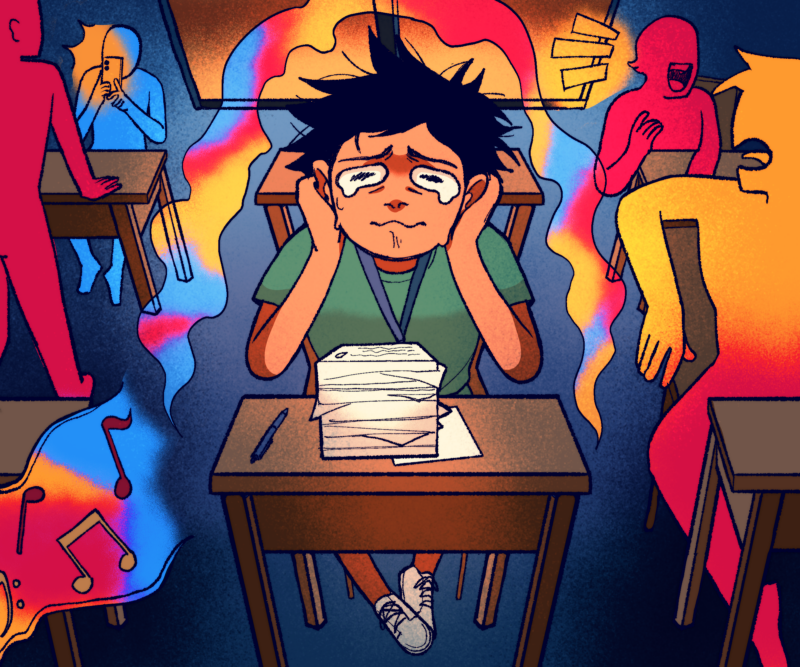Katipunan Avenue would not be the same without the maddening traffic during rush hours and the strip of commercial establishments along the length of the avenue. But in the beginning, the place was markedly different.
“The vicinity of Katipunan and Loyola Heights was just a quiet town with more vacant lots than structures lining the landscape,” says Marcos de Guzman Jr. in a Philippine Daily Inquirer article titled “A Conversion Story.” Eventually, residential and commercial establishments such as dormitories and restaurants began cropping up on the avenue, as universities like the Ateneo and Miriam settled in the area.
To use land in Quezon City, however, one has to comply with the Comprehensive Zoning Ordinance (Ordinance No. SP 918 S-2000), which classifies portions of the city into public parks, residential, commercial, and institutional areas.
Moreover, the ordinance contains provisions for height regulation, traffic generation, and other restrictions.
These last few months, SM Development Corporation (SMDC) had been seeking to build a high-rise condominium near Petron and the Sta. Maria della Strada Parish in Katipunan Avenue, in a residential area that allows only a 9-feet maximum height for buildings.
Called the Stanford Residences, the building is planned to be a student-friendly condominium in the vein of the successful Berkeley Residences that has pre-sold 46.7% of its units as of end of December.
Last March, a proposed resolution that would grant SMDC an exemption to the rule was put on hold by the Quezon City council in light of the protests by nearby subdivisions La Vista and Loyola Grand Villas citizens regarding environmental degradation, noise pollution, and worse traffic in the already congested area, should the buildings be put up.
Local city councilors, however, assert that the project “will not adversely affect public health, safety and welfare … [and will] promote livelihood.”
Waste management woes
The Stanford Residences is planned to be a 31-storey building with 1, 316 units. This number of occupants, according to Loyola Grand Villas Homeowners Association Inc. President Milagros Arnaldo, poses problems both to the Loyola Grand Villas and La Vista communities.
In a March 13 Manila Bulletin article, La Vista Homeowners Association Inc. President Renato Romero says the construction would “aggravate the already stressful environment.” Waste management and water supply would be affected by the addition of residential units.
“The environmental effects [are] the ones that [are] very frightening,” adds Arnaldo.
District IV Councilor Jesus Manuel Suntay thinks, however, that the SMDC could address these concerns. Suntay is one of the authors of Proposed Resolution 09-58, the resolution that would grant SMDC the exemption.
SMDC had conducted both traffic and environmental impact studies in the area, according to a March 14 Inquirer article. Thus, problems that had been pinpointed would have been addressed once the exemption was approved.
Residential, not commercial
SMDC’s application for exemption covers restrictions on building height and traffic regulations.
The site where Stanford is planned to be built is classified as an R1 zone. According to a discussion paper on land use and planning by Marife Magno-Ballesteros of the Philippine Institute for Development Studies, an R1 zone is a low intensity residential zone characterized by single family homes.
The Comprehensive Zoning Ordinance says that establishments in an R1 area should not stand beyond nine meters. “That is one of the greatest concerns,” says Arnaldo. “[That site] is not an industrial area.”
Sta. Maria della Strada parish priest Fr. Emmanuel Sarez , in a March 13 Manila Bulletin article, says that construction in a residential area will worsen the traffic situation in Katipunan.
Despite these disagreements, Suntay says that a compromise could have been reached. “[The opposition] doesn’t want [Stanford] built that high,” he says. “If the exemption was granted, the only thing that we could [do]…is to put a height restriction on it.”
Weighing both sides
SMDC’s request for exemption could qualify if the project would not burden the communities and if the developer could provide the proper documents. “Will it pose danger? Will it threaten the security [of the] area? All those things are considered,” Suntay says.
The resolution was co-authored by councilors Suntay, Victor Ferrer, and Winston Castelo. If approved, it would have granted SMDC an exemption to the height restriction imposed on the area according to the Comprehensive Zoning Ordinance.
After the three councilors filed the resolution on February 16, however, they found out that there was opposition to the request. Suntay then wrote to the Committee on Zoning Chairman Ricardo Belmonte to call for a public hearing, so that both the oppositors’ and the applicant’s side could be heard.
The signature swing
Suntay says that the project could bring in new jobs and additional revenues for the city. He cites Makati City’s development as an example. He adds that “investors are seeing Quezon City as a possible site for development.”
Still, the oppositors’ claims were examined and presented to SMDC. Suntay says SMDC was asked to answer the oppositors’ questions about the traffic management plan and the sewerage system.
When SMDC was unable to answer the questions satisfactorily, however, Suntay decided to withdraw his signature from the petition to exempt SM from the zoning rules.
Affected target market
The issues surrounding the project have sparked protests from concerned residents, and have also affected Stanford Residences’ image with some dormers inside the University.
Sophomore Megan*, currently a dormer in the University Residences, said that if the project had pushed through, she would be hesitant to take up a unit in such a controversial area.
“If I were to…get a condo, I’d like to think of it as a home where I could just relax and shut the world down. I wouldn’t be able to do that in a place [that] people blame for so many things,” she says.
She adds that allegations of environmental degradation would also influence how she perceives the place. “With how the world is going right now, I wouldn’t want to [make things worse].”
On the other hand, sophomore Lexis Balaguer considers practical value to be more significant. “This is a personal choice,” he says. “If cost and amenities are favorable to me, I would take the [issues surrounding Stanford] into consideration, but will most likely still choose to stay.”
Both students think, however, that SMDC should not be granted an exemption to the restrictions. “Other [residential units] have [followed the law], so why can’t they?” Megan said.
“If [the exemption] were granted, wouldn’t it reflect the hierarchy [of power in society]?” Balaguer added.
‘The issue is dead’
According to a March 7 Inquirer article, the proposed resolution has been suspended indefinitely to hold public hearings that would consider the residents’ side of the matter.
The same article quoted Atty. Epitacio Borcelis Jr., assistant corporate secretary of SMDC, saying that he cannot comment on the issue as it is in a public hearing being conducted by the Quezon City Committee on City Planning, Building, and Zoning.
Since the project was suspended, Suntay said that he and other councilors have told SMDC to invest in other areas of Quezon City where there would be no strict opposition.
He added that although SMDC has cited the convenience that the residential project would bring to students of nearby schools, opposition from affected residents was also present. “Unless you benefit from [the construction], you oppose,” Suntay says.
Arnaldo said that she will continue to oppose SMDC if the project persists in the future. She says, however, that she would prefer to settle the issue by talking things over with SMDC, along with La Vista, Loyola Grand Villas, Pansol, Miriam, and Ateneo.
“It cannot be [left] hanging,” she says. “Right now, [the issue is] dead, but who knows? You know how our system goes. We’ll never be sure. [The project] entails a lot of money.”






